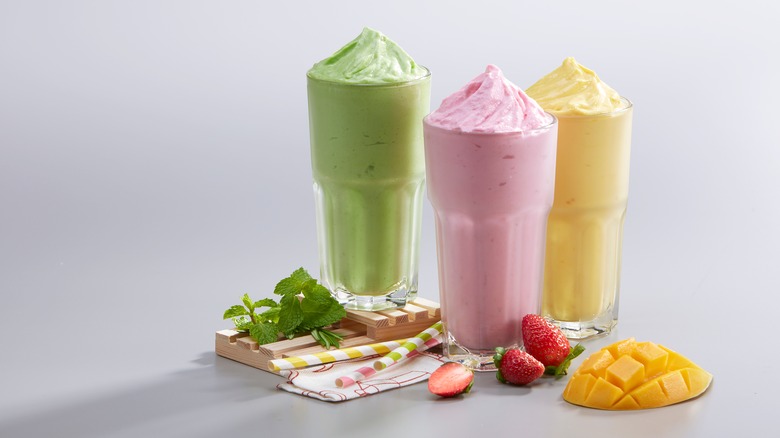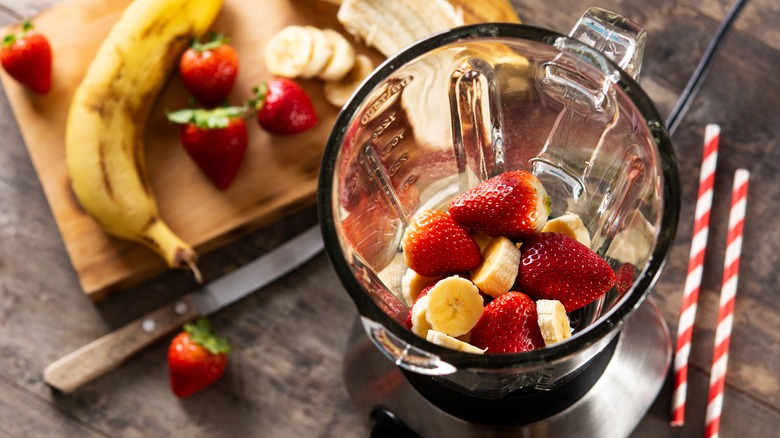Why Homemade Smoothies Don't Turn Out Like A Restaurant's
There's no better way to treat yourself than by taking a trip to your favorite smoothie bar and ordering your go-to green, purple, pink, blue — or virtually any other color of the rainbow — blended beverage. Packed with vitamins, minerals, antioxidants, and energy-boosting nutrients (via Healthline), smoothies are a delicious way to slurp in all of the benefits that your body craves. They're convenient, yummy, and nutritious — but over time, that "treat yourself" mentality can take a real toll on your bank account.
So, if you want the daily benefits of a morning smoothie, the solution seems obvious: Make your smoothies at home. All you have to do is throw some ingredients into a blender and press a button. Anyone could do it, right? Well, if you've ever attempted to recreate your go-to smoothie order at home only to be met with disappointment, you're not alone. Turns out, there are a few restaurant secrets you should consider if you want a smoothie recipe that stands up to the ones on the menu of your local juice bar.
Smoothie secrets
To start, a good smoothie comes down to the equipment you use. Since there's really only one appliance involved, your blender, you can feel justified in investing in the restaurant-grade technology. While some of the Vitamix models can run you up to $800, they have one designed specifically for smoothies — and its price is comparable to other blender brands at $250 (via Vitamix). While that's still on the pricey side, a high-performance blender with multiple speed settings is imperative to achieving thick and creamy smoothies that are actually smooth (via Huffpost). Most importantly, you won't be bothered stopping mid-blend to add more liquid or push the ingredients back to the bottom every other second.
While the specific ingredients you choose to add to your smoothies are up to you and your personal taste, there is a general ratio you can follow to achieve a well-balanced smoothie with the ideal texture. As a rule of thumb, The Washington Post suggests adding the liquid first — and HuffPost advises filling only to the top of the blades. After that, fill the blender's base with ingredients, remembering to include a balance of protein, fruits with creamy consistencies like avocados and bananas, healthy fats from nut butter or oats, and any other supplements such as spirulina. When it comes to adding greens to your smoothies, the general rule is to keep it at a 1 cup max. Once you've included your desired ingredients, you can top it off with ice and blend.

